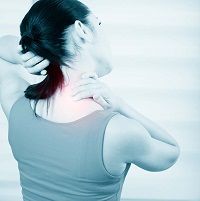Is Longer Duration of Massage More Therapeutically Advantageous for Neck Pain?
Research has shown that massage therapy is more effective than no therapy at all. A recent study sought to determine if there is a link between massage duration and effective analgesia for neck pain.

Complementary and alternative medicine practices (CAM) have long been stuck in a sort of clinical limbo: Many patients and some practitioners swear by the results of therapies ranging from massage therapy to acupuncture to ginko biloba, yet many more clinical researchers are still looking for some sustained, credible evidence that CAM therapies are an effective alternative to medications.
Pain patients often swear by massage as being as effective as, or, in some cases, more effective than medication for treating certain kinds of pain, but the clinical research supporting this just hasn’t materialized. Several clinical studies, however, have shown that massage therapy is more effective than no therapy at all. Lower back pain, in particular, has been the subject of medical research and a noteworthy (although potentially flawed) 2011 study in the Annals of Internal Medicine by Daniel Cherkin, PhD, and Richard Deyo, MD, PhD. That study “confirm[ed] the results of smaller trials that massage is an effective treatment for chronic back pain with benefits lasting at least 6 months.”
A more recent look at massage therapy appeared in The Spine Journal, but rather than simply looking at the effectiveness of massage, the study sought to determine if a longer treatment period for massage was effective in neck pain. The study was a two-phase randomized trial for 179 participants with chronic non-specific neck pain. Patients were randomized to one of 5 groups receiving 4 weeks of massage (30 minutes 2x/ or 3x/week, or, alternatively, 60 minutes 1x, 2x, or 3x/week).
To measure effectiveness, the researchers used self-reported neck-related dysfunction (Neck Disability Index) and pain on a 0-10 scale at baseline, 12 weeks, and 26 weeks. Clinically meaningful improvement was defined as >5 point decrease in dysfunction and > 30% decrease in pain from baseline.
The initial 26 weeks of the study showed no observed differences between the groups with shorter duration and fewer massages than the “booster” groups who received massage therapy more often, for longer, or both. Those receiving booster dose had improvements in both dysfunction and pain at 12 weeks but those were non—significant at 26 weeks. Subgroup analysis by primary and booster treatments found the booster dose only effective amongst those initially randomized to one of the 60 minutes massage groups.
The study authors suggest that incorporating different durations of massage should be a component of future clinical studies in pain.